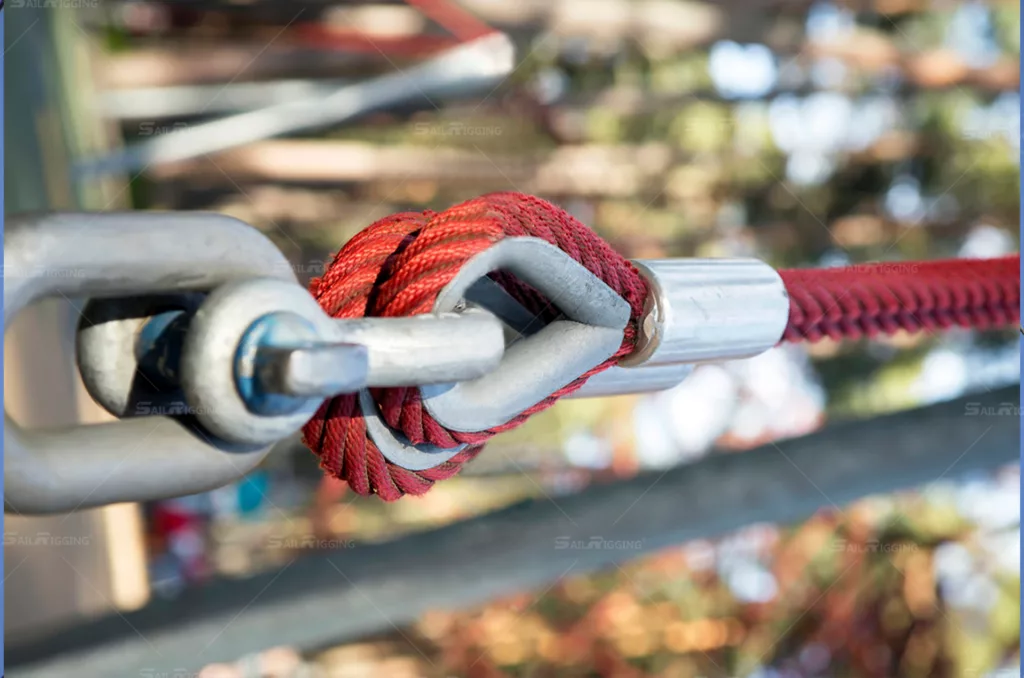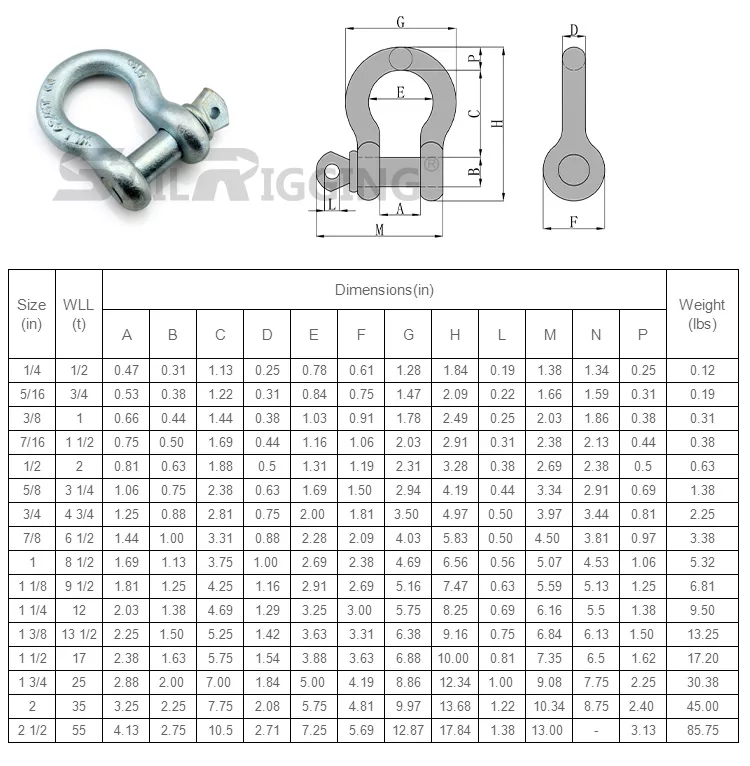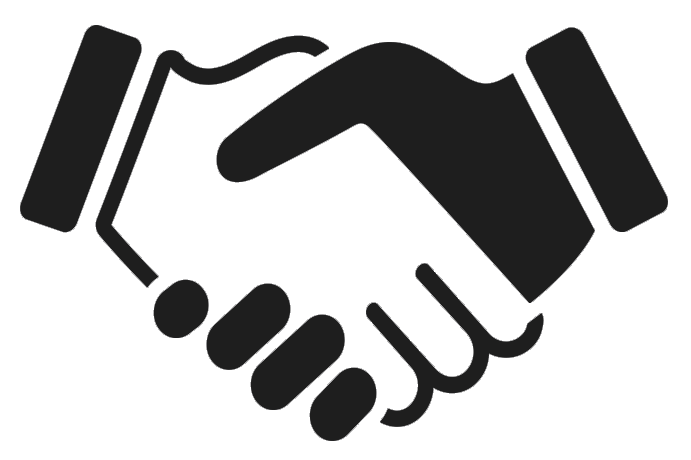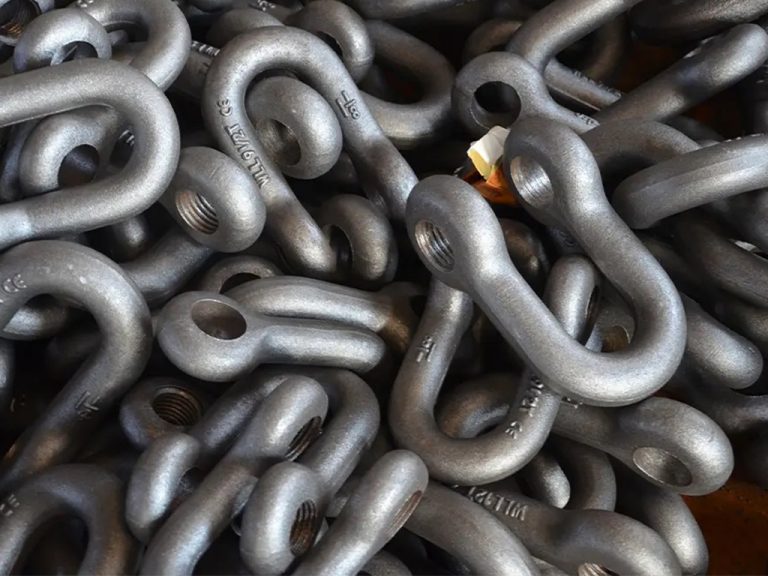4 Parts Of Shackles
When you are doing rigging, lifting, pulling and hoisting operations, it is crucial to choose the right shackle. A shackle is a clamp-shaped or U-shaped connecting ring used to connect lifting slings, wire ropes, chains and ropes, suitable for various rigging, lifting, pulling and hoisting applications. Its removable pin design is ideal for temporary lifting operations or quick connection and disconnection.

In order to cope with different lifting and hoisting scenarios, rigging shackles vary in type, size and tension, surface, and material. Therefore, when choosing the right shackle type, it is important to fully understand the components of the shackle.
This article will discuss the main characteristics of the shackle, such as components, dimensions, and the connection between these parameters.
Table of Contents
Components of a shackle
Although there are many types of shackles, different types, sizes, tensions and uses, they mainly contain four key components. Shackles are an essential component in various industries, including rigging, lifting, and maritime applications. They come in different types, each with its unique design and purpose, but mainly 4 key parts of shackles.

Bow or D-Ring
The bow or D-ring is the central and most visible part of the shackle, and its design is a crucial factor in determining the type of shackle. There are two common types: bow shackles and D-ring shackles.
Bow Shackle: Bow shackles have a rounded or U-shaped design, making them suitable for various applications, including those with side-loading. Their curved shape allows them to accommodate a broader range of angles and loads, making them versatile and commonly used in lifting and rigging operations.
D-Ring Shackle: D-ring shackles have a “D” or horseshoe-shaped design, with a straight edge and a curved edge forming the D shape. This design provides increased stability in one direction, making D-ring shackles ideal for applications where the load is predominantly in one plane, such as when attaching a strap or sling.
Pin
The pin is a critical component that holds the shackle together and secures the load. It is a removable, threaded bolt that passes through the holes in the bow or D-ring and is then fastened using a nut or other locking mechanism. There are two common types of pins used in shackles:
Screw Pin: Screw pins are threaded through the shackle’s ears or eyes, making them easy to install and remove by hand. They are commonly used when there is frequent assembly and disassembly of the shackle, such as in temporary rigging setups.
Bolt Pin: Bolt pins are secured with a separate nut and are less likely to accidentally come undone, making them suitable for applications where the shackle must remain securely closed for extended periods or where additional security is required.
Body
The body of the shackle is the part that connects the bow or D-ring to the pin. It acts as a bridge, ensuring the load is evenly distributed between the bow or D-ring and the pin. The design of the body can vary:
Short Body: Some shackles have a more compact body, which is designed for applications with limited vertical clearance or where the shackle needs to fit into tight spaces. Short bodies are often found in screw pin shackles.
Long Body: Shackles with a longer body offer greater clearance and are suitable for situations where the shackle needs to rotate or pivot freely. These are common in bolt pin shackles.
Ears or Eyes
Some shackles, particularly those used in maritime, towing, or heavy-duty applications, may have additional attachment points called ears or eyes. These ears or eyes are extensions of the bow or D-ring and provide a convenient means of attaching ropes, cables, chains, or other rigging equipment.
Ears: Ears are often shaped like flattened extensions on the sides of the bow or D-ring and provide attachment points for hooks, ropes, or other hardware.
Eyes: Eye shackles have a more circular, ring-like extension on the bow or D-ring, providing a versatile attachment point for various connections.
Shackle sizes
Whether it is a small or large shackle, be sure to pay attention to the diameter of the shackle pin. In American die-forged shackles and national standard shackles, the pin diameter is larger than the body diameter. In Japanese shackles and European shackles, the shackle body diameter is consistent with the pin diameter. However, the key measurement value of any standard shackle size is the diameter of the shackle body, not the size of the shackle pin.
The most popular shackle sizes and specifications on the market are 3/4 inch, 5/8 inch, 1/2 inch, 1 inch, 3/8 inch and 7/8 inch. The weight of the shackle varies with the shackle size. Generally, the difference in size or weight between standard shackle sizes should not exceed ±5%. Taking the American G209 shackle as an example, the figure below shows the size and working tension of the G209.

Usually, there will be a mark of size and tension on the shackle body. If you want to know how to measure the shackle, you can refer to this article.
What Are Shackles Used For
Shackles are used in a variety of lifting, rigging and pulling applications and come in a variety of sizes and types, each with its own specific purpose. Small shackles are used for lighter loads, medium shackles are often used in rigging and lifting to connect ropes, chains and slings, and large shackles are used for high-load operations such as industrial lifting and pulling, such as marine vessels, for connecting anchor chains and other heavy rigging.
How To Produce Shackles
You also need to understand how shackles are made. Different shackle manufacturing methods will result in different product performance. Shackles are generally made in two ways: forging and casting. Forged shackles are made by cutting a steel rod of the right size, heating it at high temperature, and striking the rod with an air hammer to forge it into shape. This method ensures that the steel grade and density are the same throughout the shackle. Cast shackles are made by pouring molten metal into a mold and then allowing it to dry. This process causes bubbles to form and persist inside the finished product, which can seriously reduce its breaking strength. For this reason, cast shackles are not usually suitable for lifting purposes and usually have no stated breaking strength or working load limit.
Conclusion
These components and their variations is essential for selecting the right shackle for specific applications. Right shackles could keep safe and efficient use in various industries, from construction and manufacturing to maritime and off-road activities. If you want to learn more information, feel free to contact Sail Rigging.
FAQ
1.What Are Shackle types?
According to different standards, they can be divided into different shackles. According to the shape, they can be divided into straight and bow types. According to the production standards, they can be divided into American shackles, Japanese shackles, European shackles, Australian shackles, etc. According to the material, they can be divided into electro-galvanized shackles, hot-dip galvanized shackles, stainless steel shackles, etc. For details, please see this https://www.qdsailrigging.com/a-comprehensive-guide-to-the-different-types-of-shackles/
2. What Are Anchor Shackles?
Anchor shackles, also known as bow shackles, are shackles with a large, rounded “O” shaped bow. The larger bow allows these types of shackles to be side loaded or used for multiple sling leg connections. At the same time, the round design allows them to withstand loads from multiple directions without significant wear.







